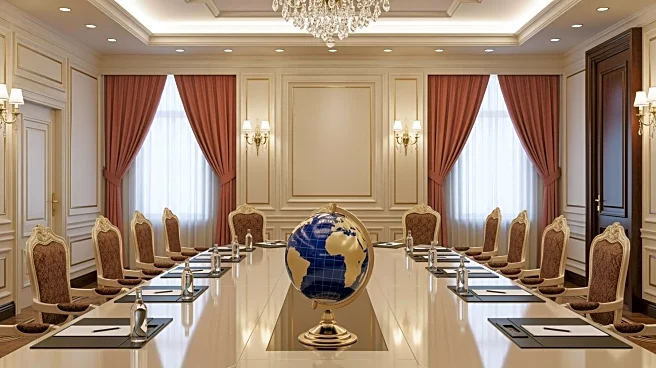What's Happening?
President Trump is hosting leaders from five Central Asian countries at the White House to discuss securing rare earth metals crucial for high-tech devices and military equipment. This summit follows recent
trade negotiations with China, which controls a significant portion of global rare earth processing. Central Asia, with its deep reserves of these minerals, presents an alternative source for the U.S. However, the region requires investment to develop these resources further. The meeting aims to strengthen economic ties and explore opportunities for American investment, countering China's influence in the region.
Why It's Important?
The U.S. is seeking to diversify its sources of rare earth metals, which are essential for various technologies and defense applications. China's dominance in this sector poses strategic risks, especially amid ongoing trade tensions. By engaging with Central Asian countries, the U.S. aims to reduce dependency on China and bolster its supply chain resilience. This move could enhance American technological and military capabilities, while also fostering economic growth in Central Asia. The initiative reflects broader geopolitical strategies to counter China's influence and support regional stability.
What's Next?
The summit may lead to increased American investment in Central Asia's mineral sector, potentially altering trade dynamics in the region. Legislative efforts are underway to repeal Soviet-era restrictions that hinder U.S. investment, which could pave the way for deeper economic cooperation. The U.S. is likely to continue diplomatic engagements to solidify partnerships and ensure access to critical resources. The outcome of these discussions could influence future trade policies and impact global rare earth supply chains.
Beyond the Headlines
The U.S. initiative to engage Central Asian countries highlights the geopolitical complexities of resource acquisition. It underscores the strategic importance of rare earth metals in national security and technological advancement. The move also reflects a shift in U.S. foreign policy, focusing on building alliances to counterbalance China's global influence. This development may lead to long-term shifts in international trade relations and resource management strategies.













